The price decline of electricity from renewable sources
by Max Roser, Founder, and Director, Our World In Data
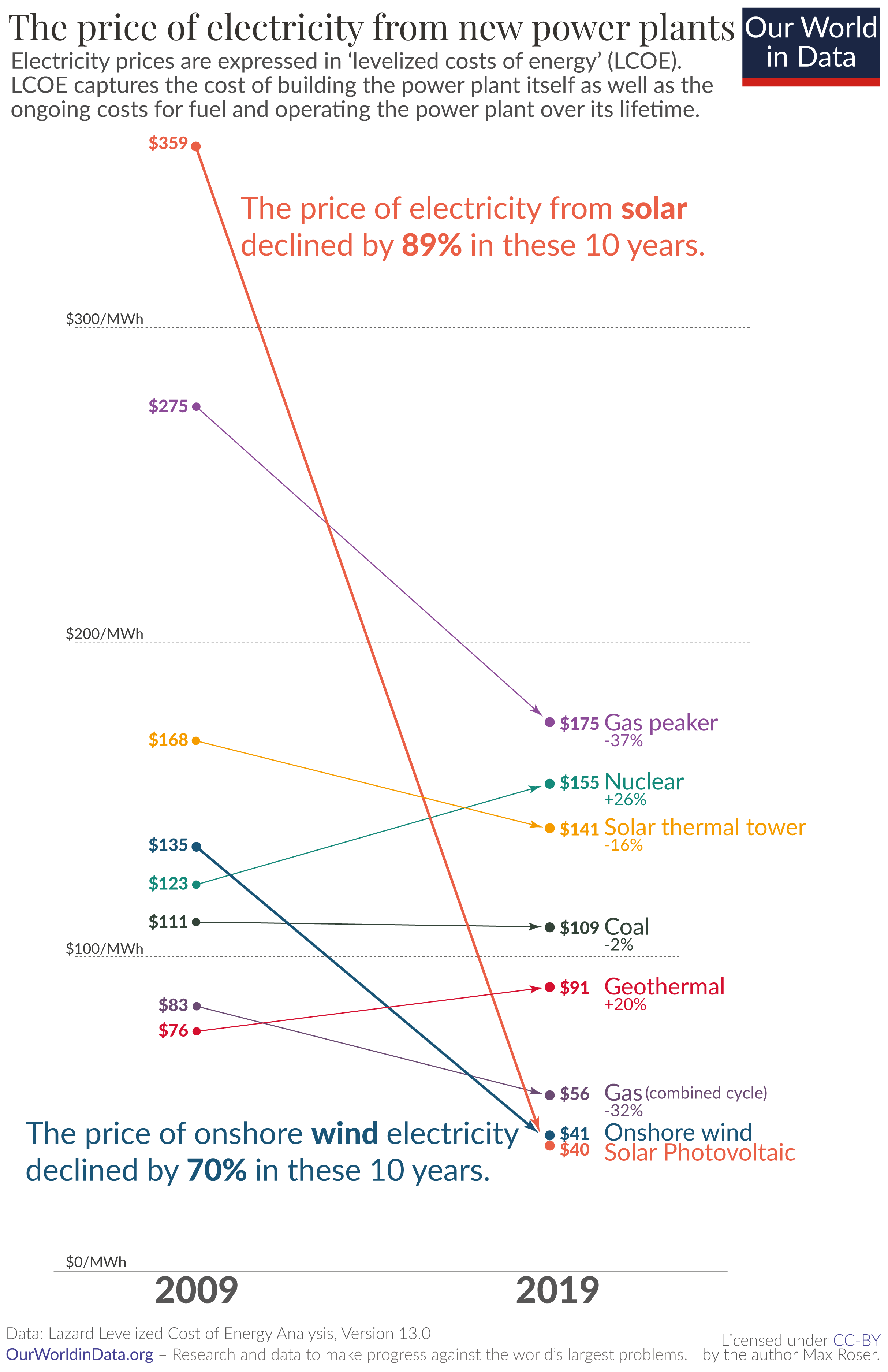
If we want to transition to renewables, it is their price relative to fossil fuels that matter. This graph compares the prices from 2009 to 2019 of the different sources of electricity.
All of these prices – renewables as well as fossil fuels – are without subsidies.
Look at the change in solar and wind energy in recent years. Just 10 years ago it wasn’t even close: it was much cheaper to build a new power plant that burns fossil fuels than to build a new solar photovoltaic (PV) or wind plant. The wind was 22%, and solar 223% more expensive than coal.
But in the last few years, this has changed entirely.
Electricity from utility-scale solar photovoltaics cost $359 per MWh in 2009. Within just one decade the price declined by 89% and the relative price flipped: the electricity price that you need to charge to break even with the new average coal plant is now much higher than what you can offer your customers when you build a wind or solar plant.
It’s hard to overstate what a rare achievement these rapid price changes represent. Imagine if some other good had fallen in price as rapidly as renewable electricity: Imagine you’d found a great place to live back in 2009 and at the time you thought it’d be worth paying $3590 in rent for it. If housing had then seen the price decline that we’ve seen for solar it would have meant that by 2019 you’d pay just $400 for the same place.
I emphasized that it is the relative price that matters for the decision of which type of power plants are built. Did the price decline of renewables matter for the decisions of actual power plant builders in recent years? Yes, it did. As you see in our Energy Explorer, wind and solar energy were scaled up rapidly in recent years; in 2019 renewables accounted for 72% of all new capacity additions worldwide.
Resuming
For the world to transition to low-carbon electricity, energy from these sources needs to be cheaper than electricity from fossil fuels.
Fossil fuels dominate the global power supply because until very recently electricity from fossil fuels was far cheaper than electricity from renewables. This has dramatically changed within the last decade. In most places in the world power from new renewables is now cheaper than power from new fossil fuels.
The fundamental driver of this change is that renewable energy technologies follow learning curves, which means that with each doubling of the cumulative installed capacity their price declines by the same fraction. The price of electricity from fossil fuel sources however does not follow learning curves so that we should expect that the price difference between expensive fossil fuels and cheap renewables will become even larger in the future.
This is an argument for large investments into scaling up renewable technologies now. Increasing installed capacity has an extremely important positive consequence that it drives down the price and thereby makes renewable energy sources more attractive, earlier. In the coming years, most of the additional demand for new electricity will come from low- and middle-income countries; we have the opportunity now to ensure that much of the new power supply will be provided by low-carbon sources.
Falling energy prices also mean that the real income of people rises. Investments to scale up energy production with cheap electric power from renewable sources are therefore not only an opportunity to reduce emissions but also to achieve more economic growth – particularly for the poorest places in the world.





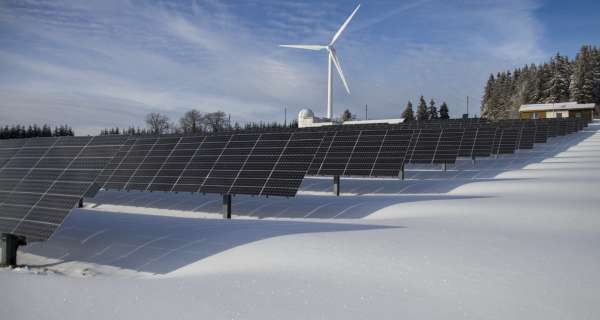

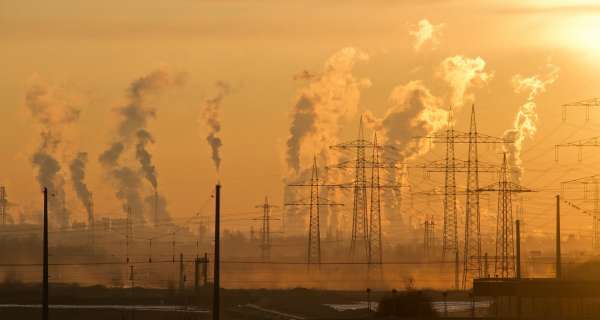









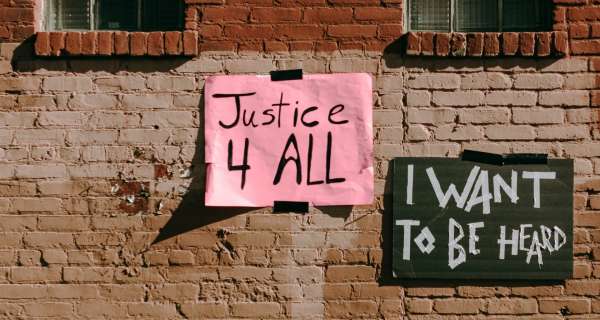
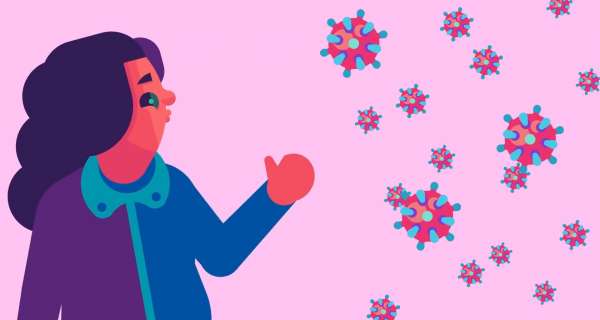

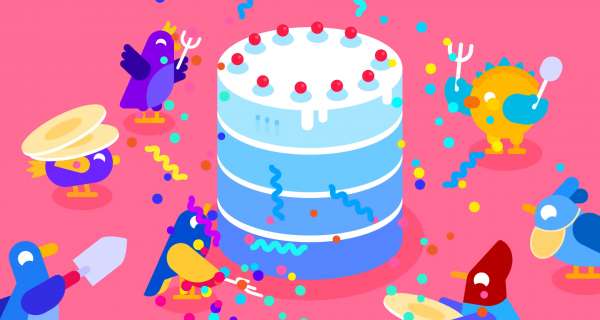

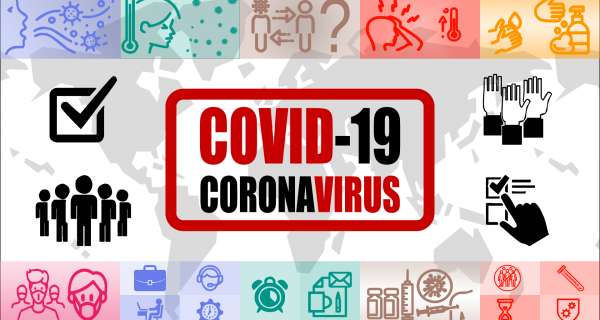


0 Comments